SA335P12 seamless steel pipe is an alloy steel pipe widely used in high-temperature and high-pressure environments, belonging to the P12 grade in the ASTM A335 standard. With its excellent high-temperature and corrosion resistance, as well as good mechanical properties, this steel pipe plays an important role in the petrochemical, power generation, and boiler manufacturing industries.
First, Material Properties and Chemical Composition of SA335P12 Seamless Steel Pipe
The primary chemical composition of SA335P12 seamless steel pipe is a chromium-molybdenum alloy, with a typical composition of: carbon ≤ 0.15%, manganese 0.30-0.60%, phosphorus ≤ 0.025%, sulfur ≤ 0.025%, silicon 0.50-1.00%, chromium 0.80-1.25%, and molybdenum 0.44-0.65%. This alloy combination imparts the following properties to the pipe:
1. High-Temperature Strength: It maintains high tensile and creep strengths below 580°C, making it suitable for high-temperature components such as superheaters and reheaters in power plant boilers.
2. Oxidation Resistance: The addition of chromium forms a dense oxide film, effectively resisting high-temperature fume corrosion.
3. Weldability: The quality of welded joints is ensured by controlling the carbon equivalent (typically ≤0.45%). Preheating and post-weld heat treatment are required.
Second, the Production Process of SA335P12 Seamless Steel Pipe
1. Steelmaking and Continuous Casting: Smelting is performed in an electric arc furnace or converter, followed by LF refining and VD vacuum degassing to ensure molten steel purity (S and P content ≤0.015%). Continuously casting ingots are subjected to electromagnetic stirring to reduce segregation.
2. Hot Rolling: After heating the ingot to 1200-1250°C, it passes through a piercing mill to form a rough tube, which is then passed through a continuous rolling mill for wall reduction and elongation. The key is to control the final rolling temperature within the range of 850-900°C. 3. Heat Treatment: Normalizing and tempering (normalizing temperature 900-950°C, tempering temperature 680-730°C) are used to transform the microstructure into a uniform tempered bainite with a hardness controlled between 170-220 HB.
4. Nondestructive Testing: 100% ultrasonic testing (compliant with ASTM A450) and eddy current testing are performed. High-pressure boiler tubes also undergo a hydrostatic test (test pressure ≥ 70 MPa).
Third, Typical Applications of SA335P12 Seamless Steel Pipe
1. Power Industry: Widely used in supercritical units (e.g., main steam piping with a design pressure of 26 MPa/605°C). SA335P12 steel pipe has been used in power plant renovation projects at Huaneng and Datang Power Plants.
2. Petrochemical Industry: As feed piping for hydrogenation reactors (operating temperature 450-550°C), it offers superior hydrogen corrosion resistance to carbon steel. A case study in a refining project demonstrates a service life exceeding 15 years. 3. Nuclear Power: Auxiliary piping systems for second-generation upgraded nuclear power plants require rigorous irradiation embrittlement assessments.
Fourth, Key Quality Control Points for SA335P12 Seamless Steel Pipes
1. Internal Fracture: Optimizing the piercing plug shape (flare angle ≤ 12°) and adjusting the rolling speed (≤ 0.3 m/s) can reduce the occurrence rate.
2. Performance Fluctuation: Utilizing online quenching technology (cooling rate ≥ 30°C/s) combined with a tempering process can ensure an impact energy ≥ 60 J at -20°C.
3. Dimensional Accuracy: The latest GB5310-2017 standard requires an outer diameter tolerance of ±0.75% and a wall thickness tolerance of +12.5/-10%. A laser diameter gauge is required for real-time monitoring.
Fifth, Technical Development Trends for SA335P12 Seamless Steel Pipes
1. Material Upgrade: New improved P12 steel grades (e.g., adding 0.03% Nb) can increase the allowable stress by 10% and have already been used in demonstration projects.
2. Smart Manufacturing: The MES system implemented by a leading enterprise reduced energy consumption in the rolling process by 18% and increased the yield rate to 92.5%.
3. Green Production: The use of a hydrogen-based shaft furnace direct iron reduction process can reduce CO₂ emissions by 40% (Baosteel's pilot line has already started trial production).
Sixth, Procurement Recommendations for SA335P12 Seamless Steel Pipes
1. Certification Requirements: ASME SA335 certification is required, and a NABL laboratory test report is recommended. A tender case study shows that suppliers with PED 2014/68/EU certification have a 25% higher success rate.
2. Cost Optimization: Bulk purchases (≥500 tons) can receive a 5-8% discount, but be aware of the current industry average of 45 days.
3. Alternative Options: For operating conditions with design temperatures ≤550°C, SA213 T12 welded pipes can be evaluated (cost reduction of 20%, but requiring increased weld inspection frequency).
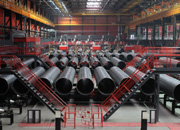 Threeway Steel is known as a professional supplier engaged in manufacturing and distributing a wide range of steel pipe, and our headquarter located the central part of China – Hunan and six associated factories throughout China.
Threeway Steel is known as a professional supplier engaged in manufacturing and distributing a wide range of steel pipe, and our headquarter located the central part of China – Hunan and six associated factories throughout China.
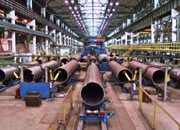 Threeway Steel is known as a professional supplier engaged in designing, manufacturing and distribution of a wide range of steel products with the headquarter located the central part of China – Hunan and six associated factories throughout China.
Threeway Steel is known as a professional supplier engaged in designing, manufacturing and distribution of a wide range of steel products with the headquarter located the central part of China – Hunan and six associated factories throughout China.
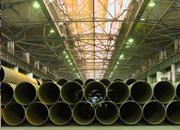 Threeway Steel is known as a professional supplier engaged in designing, manufacturing and distribution of a wide range of steel products with the headquarter located the central part of China – Hunan and six associated factories throughout China.
Threeway Steel is known as a professional supplier engaged in designing, manufacturing and distribution of a wide range of steel products with the headquarter located the central part of China – Hunan and six associated factories throughout China.
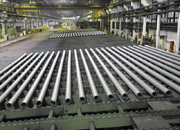 Threeway Steel is known as a professional supplier engaged in designing, manufacturing and distribution of a wide range of steel products with the headquarter located the central part of China – Hunan and six associated factories throughout China.
Threeway Steel is known as a professional supplier engaged in designing, manufacturing and distribution of a wide range of steel products with the headquarter located the central part of China – Hunan and six associated factories throughout China.
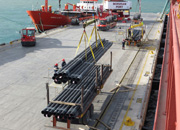 Threeway Steel is known as a professional supplier engaged in designing, manufacturing and distribution of a wide range of steel products with the headquarter located the central part of China – Hunan and six associated factories throughout China.
Threeway Steel is known as a professional supplier engaged in designing, manufacturing and distribution of a wide range of steel products with the headquarter located the central part of China – Hunan and six associated factories throughout China.

